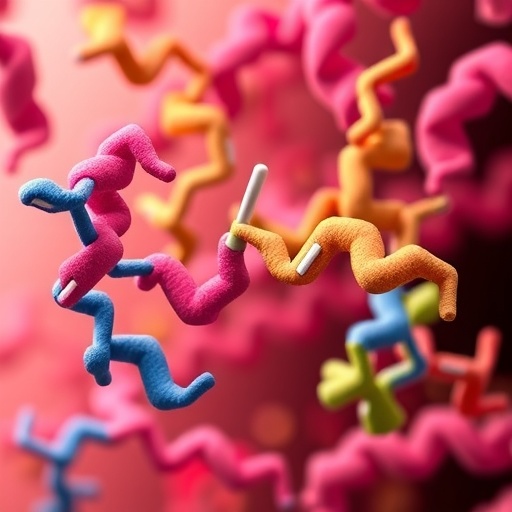A recent study published in Cell Chemical Biology has revealed new insights into a molecular pathway that leads to Staphylococcus aureus virulence. Using a tool that mimics the cellular environment, Princeton University researchers reconstituted a key receptor protein responsible for regulating S. aureus virulence. These bacterial infections can cause a range of human illnesses from skin infections to pneumonia.
"S. aureus has sort of a Jekyll and Hyde lifestyle," said Tom Muir, the Van Zandt Williams Jr. Class of 1965 Professor of Chemistry and Department Chair and corresponding author of the article. "When it's on your skin it's fairly benign, but once it gets into an abscess or cut, it changes its behavior and starts making all sorts of proteins that lead to various problems."
The bacteria switches on this bad behavior by using a chemical signaling system known as quorum sensing. In this system bacteria secrete compounds called autoinducer peptides (AIPs) that are detected by receptor proteins called accessory gene regulator (Agr) kinases. Once the kinases sense a certain concentration of peptides, they release the troublemaking proteins or virulence factors.
"Quorum sensing is a way for the bacteria to count themselves," Muir said. "When they get above a certain threshold, they attack. They don't want to do this too early because it costs a lot of energy, so they wait until there are enough of their comrades around to make a difference."
Within the bacteria's quorum sensing system there are four types of peptides and each group is detected by corresponding Agr receptor kinases. Each peptide-receptor pair has distinct timing at which it turns on quorum sensing and thus virulence. To investigate how the timing of the quorum sensing was linked to the receptor kinases, the researchers developed so-called nanodiscs allowed them to observe how Agr kinases operate in a cell-like environment. Using the nanodiscs, the team elucidated the activation mechanism of receptor kinase AgrC and discovered a key regulatory hotspot in the kinase that could greatly affect its activity.
These new insights into how the kinase is turned on provides a starting point for designing molecules to inhibit it, Muir said. "This is actually terrific for screening drugs. Even though this work started as a basic science study, the tool that came out of it will be really useful for applications down the line," he said.
###
Read the full article here:
Wang, B.; Zhao, A.; Xie, Q.; Olinares, P. D.; Chait, B. T.; Novick, R. P.; Muir, T. W. "Functional Plasticity of the AgrC Receptor Histidine Kinase Required for Staphylococcal Virulence." Cell Chem. Bio. 2017 24, 76. This work was supported by NIH grants AI042783, GM095880, and GM103314.
Media Contact
Tien Nguyen
[email protected]
609-258-6523
@Princeton
http://www.princeton.edu
############
Story Source: Materials provided by Scienmag




